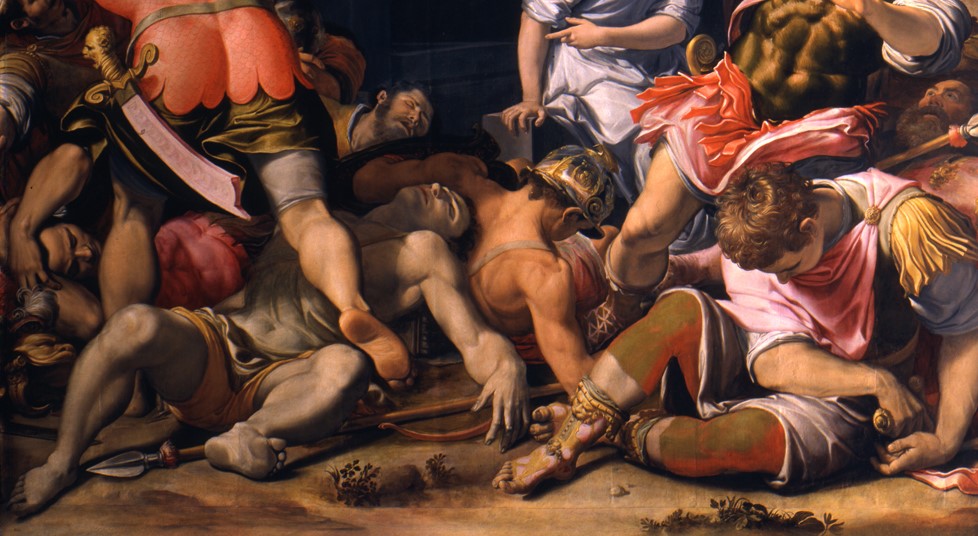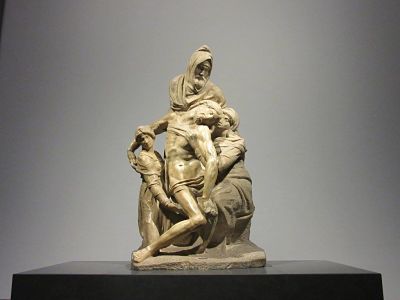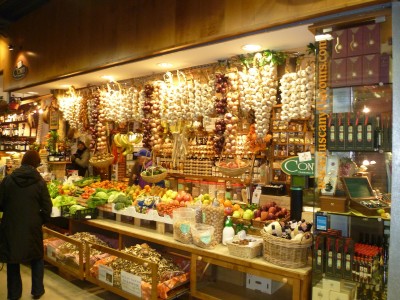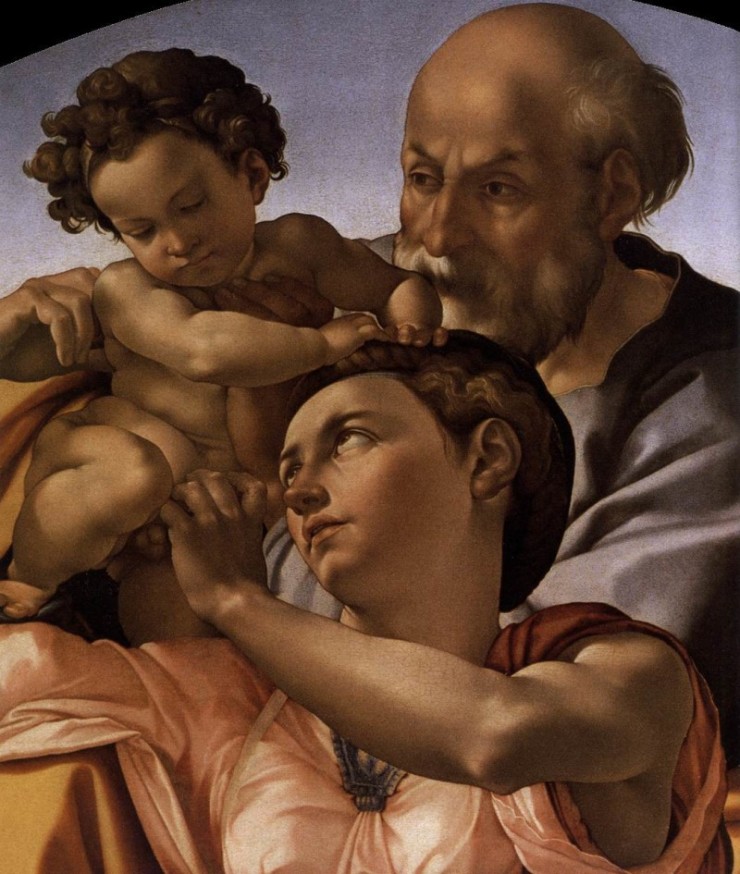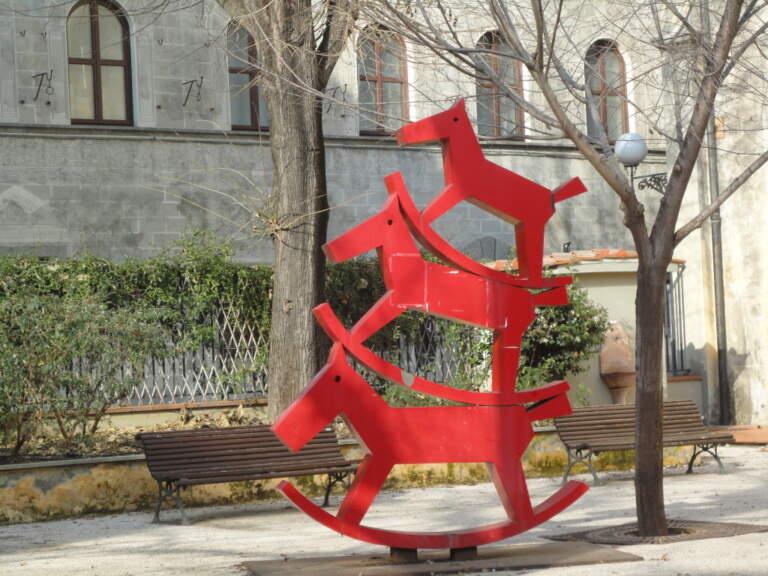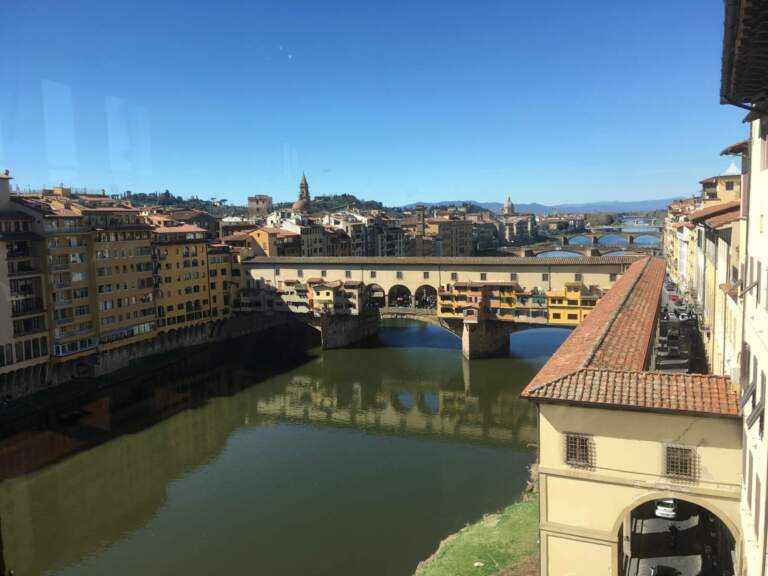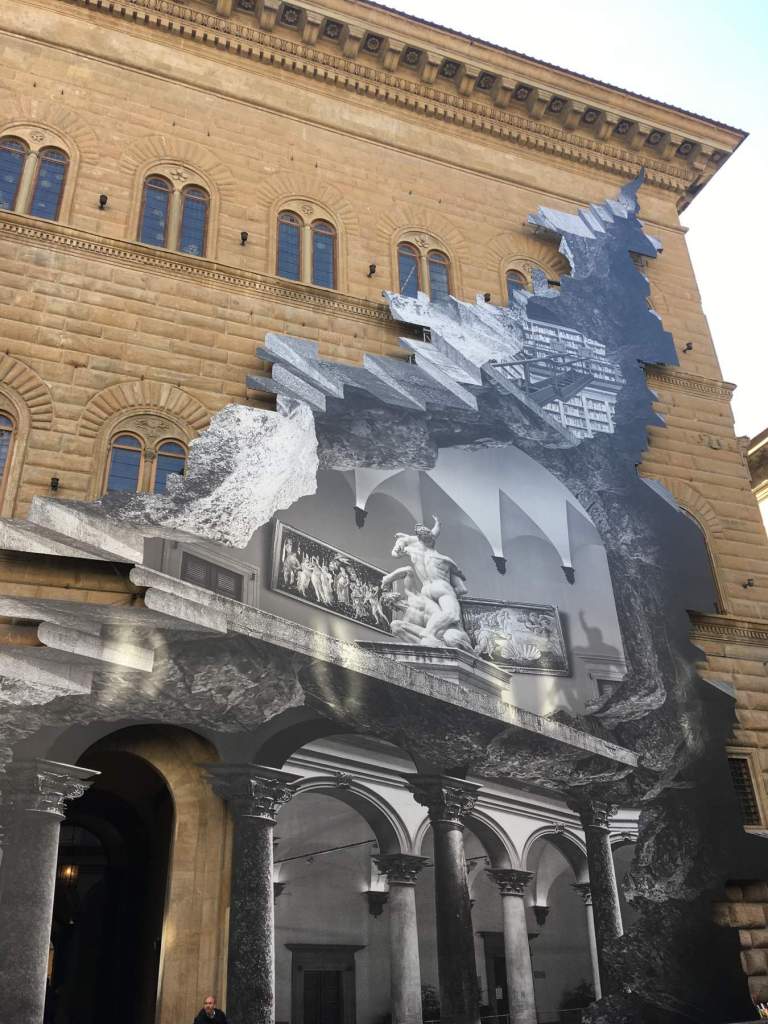The Cinquecento in Florence.
So much happened in the 1500’s: the Protestant Reformation, the Catholic Reformation (aka Catholic Revival), Charles V, Holy Roman Emperor, and the worldwide geographic discoveries, not to mention Ariosto and Tasso. For an artistic and Florentine perspective on this world, the exhibition at Palazzo Strozzi confronts us with rooms even more dense and challenging than usual, exploring works and concepts in depth.
From the very beginning we find ourselves before opposing positions: Michelangelo’s Dio Fluviale and Andrea del Sarto’s Pietà di Luco. While Michelangelo’s role for generations of artists is undisputed, it is time to restore to Andrea Del Sarto, a beloved artist much copied and even described as “without error,” to his proper place as protagonist in the world of art and of Florentine art.
It is the greatness of these two masters and their artistic freedom that paved the way for a generation of artists who are very different one from the other: Rosso Fiorentino, Pontormo and Bronzino. Their three great paintings depicting The Deposition are three testimonies to the greatness of their masters: the conservative abstraction of Rosso, the metaphysical reflection of Pontormo, and the naturalistic expression of Bronzino. This important confrontation without precedent – actually in situ and not in an art book – integrates this exposition with the preceding exhibitions of Bronzino in 2010 and Pontormo and Rosso in 2014 at Palazzo Strozzi.
What follows the introduction to the exhibit are manifestations of various currents of expression, of facets, of elaborations growing out of this heritage. In the portrait art of the time you see refined and cultured reference to the court and to nobility, as in the suggestive Allegory of Friendship by Mirabello Cavalori. There is also room here for the sculpture portrait of Dwarf Barbino by Valerio Cioli. And on the altars, where one expects to find the most revered artists of the day, we witness the difficulty of the passage to the Catholic Reformation: while artists like Pietro Candido try to maintain a glow and luminescence in their work, the artist of reference of the period, Santi di Tito, introduces pre-Caravaggio presages within the context of the Florentine style in the details of his paintings.
The appreciation of the works is strengthened not just by means of careful light and fine display but also because this exhibit includes many excellently restored pieces of artwork, including Santi di Tito, Bronzino and Pontormo (a total of 17, which is a lot).
The brief reign of Francesco I dei Medici is at the heart of the exhibit, expressing a refined and exclusive taste for rare and precious things. In the rooms dedicated to Francesco, Michelangelo seems nearly forgotten while one loses oneself in the refined sculpture and mythological stories in the paintings in Studiolo style: glossy oils on copper, fables, shiny little bronzes.
Key to the Florentine style, thanks to profound humanistic roots, is the survival of allegorical and mythological themes, paintings made for home exposition in which Venus and Psyche predominate in their grace. One of the most valuable works in this exhibition is Giambologna’s sculpture Fata Morgana which decorated a Villa “il Riposo” in the hills above Florence. Lost for hundreds of years and subsequently found and restored in the 20th century, this sculpture alone evokes a world of pleasure and refined thought.
The conclusion of the exhibit is dedicated to the altars and in particular to the great Vision of Saint Thomas Aquinas by Santi di Tito, a theatrical scene with spectators, gossips, and figures in modern dress to promote the idea that Baroque Figurative Art ows to Florentine artists as much as to Bolognese or Roman ones.
This interesting aspect of the exhibition is the stimulus to revisit Florentine monuments in a new light, like Santa Croce with its rich altars, and to rediscover places like Casa Vasari or the San Pierino Oratorio.
To visit the exhibition and discover the marvels of the Florentine 1500’s, send us an email!

